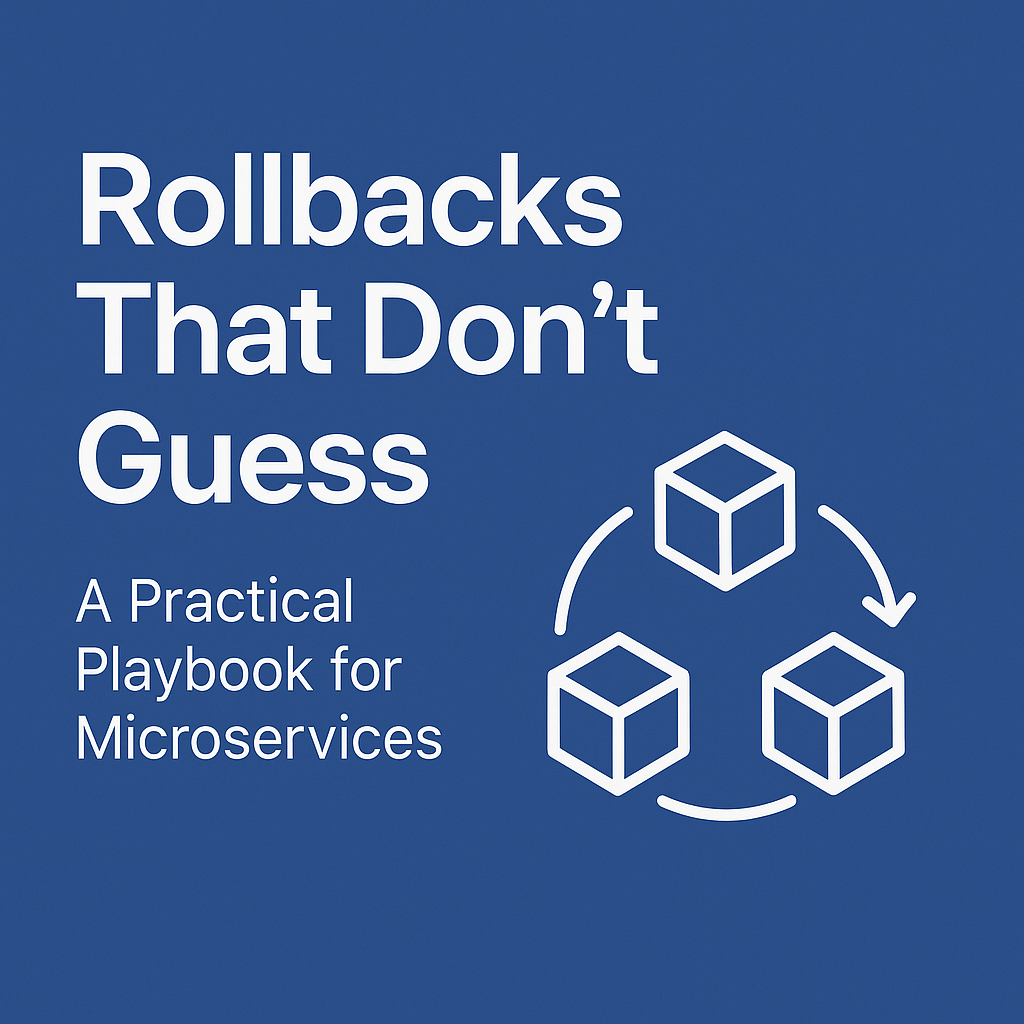
When something goes wrong in production, the most common question an SRE asks is:
> “What changed?”
And the most common fix?
> “Roll it back.”
Rolling back to a previous version usually works like a charm—except when it doesn’t. Sometimes the previous version isn’t actually stable, or it’s hard to know which version is the right one to go back to. In a microservices setup, this problem gets worse: each service is built by different teams, deployed at different times, and can fail in very different ways.
So how can SREs be better prepared to roll back quickly and safely?
Let’s explore a practical approach we’ve been using—and how a simple dashboard (built with AI in minutes) can make rollback decisions boring again.
In Kubernetes environments, developers usually build code, package it as Docker images, and push them through dev → QA → production. Most of the time this works fine.
But when production faces complex inputs and real-world traffic, issues can pop up that were never seen in QA. Suddenly, the SRE team is staring at dashboards, wondering which service broke and which version to roll back to.
Imagine if every service had a single row in a dashboard with columns like:
Wouldn’t it make an SRE’s life simpler if they could just glance at this, see what changed, and click to roll back?
Here’s the fun part: building this kind of dashboard doesn’t need months of tooling. With an AI agent, you can assemble it in minutes.
At DagKnows, we implemented exactly this:
The result? An SRE can stop guessing and just land on evidence. And yes, this has made SRE life so boring that they can now spend time on more interesting things—like building cool games or writing blogs.
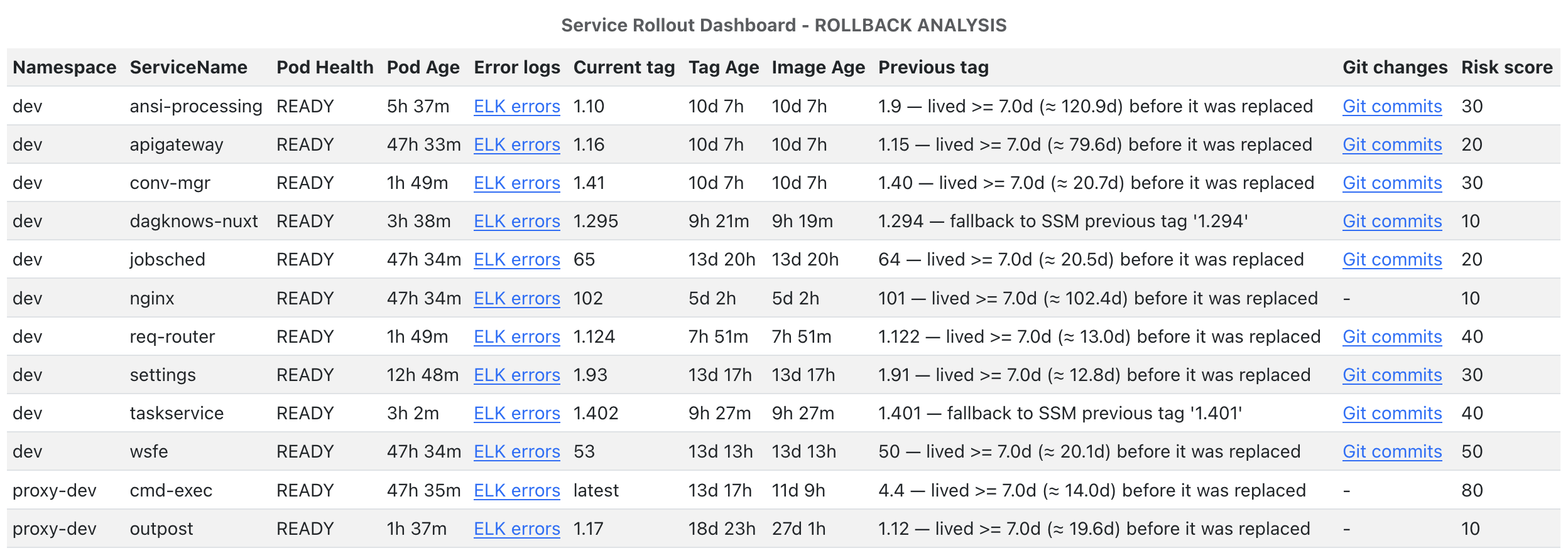
Notice how easy it becomes to make a call:
Here’s how it works step by step:
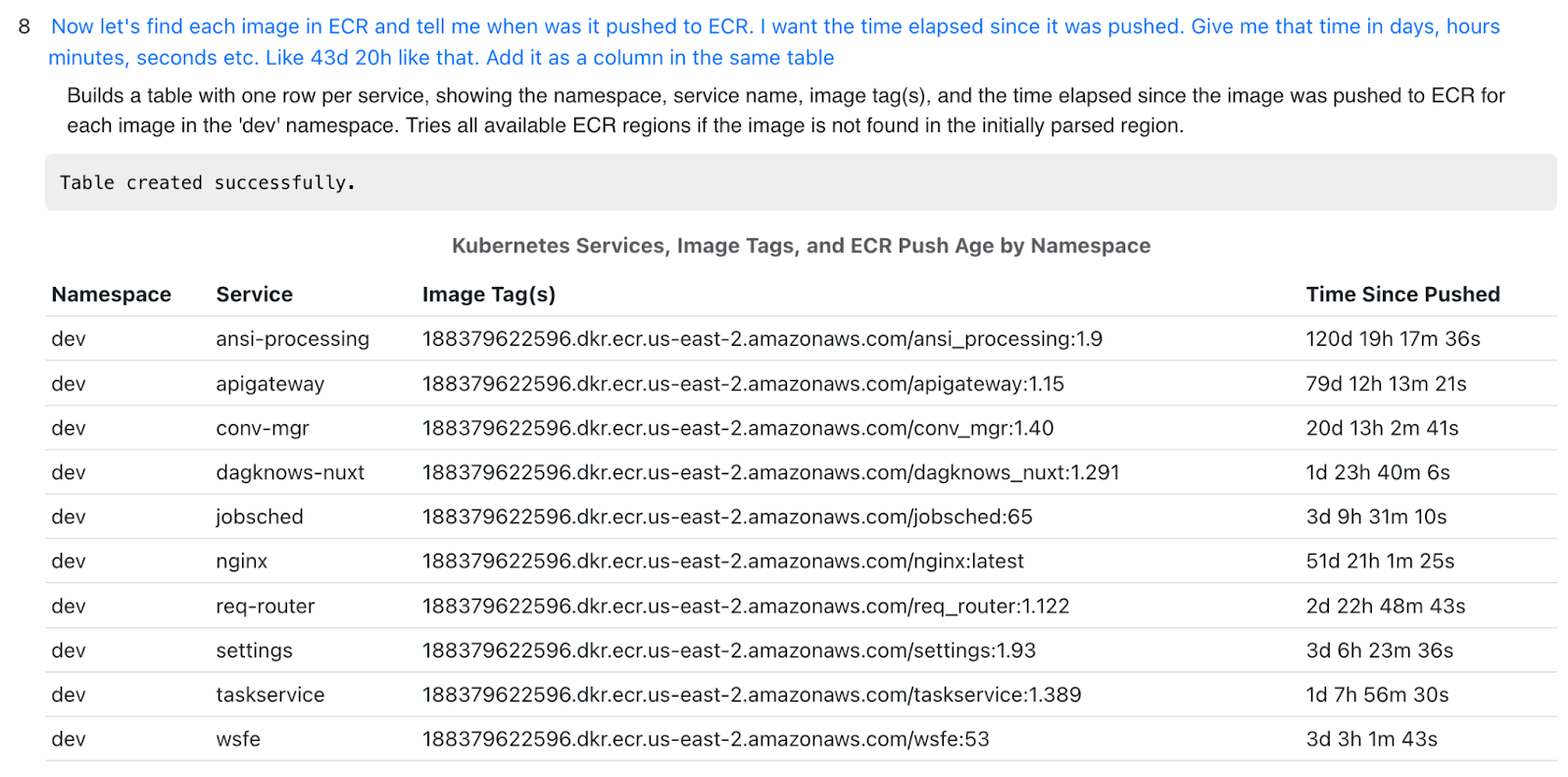
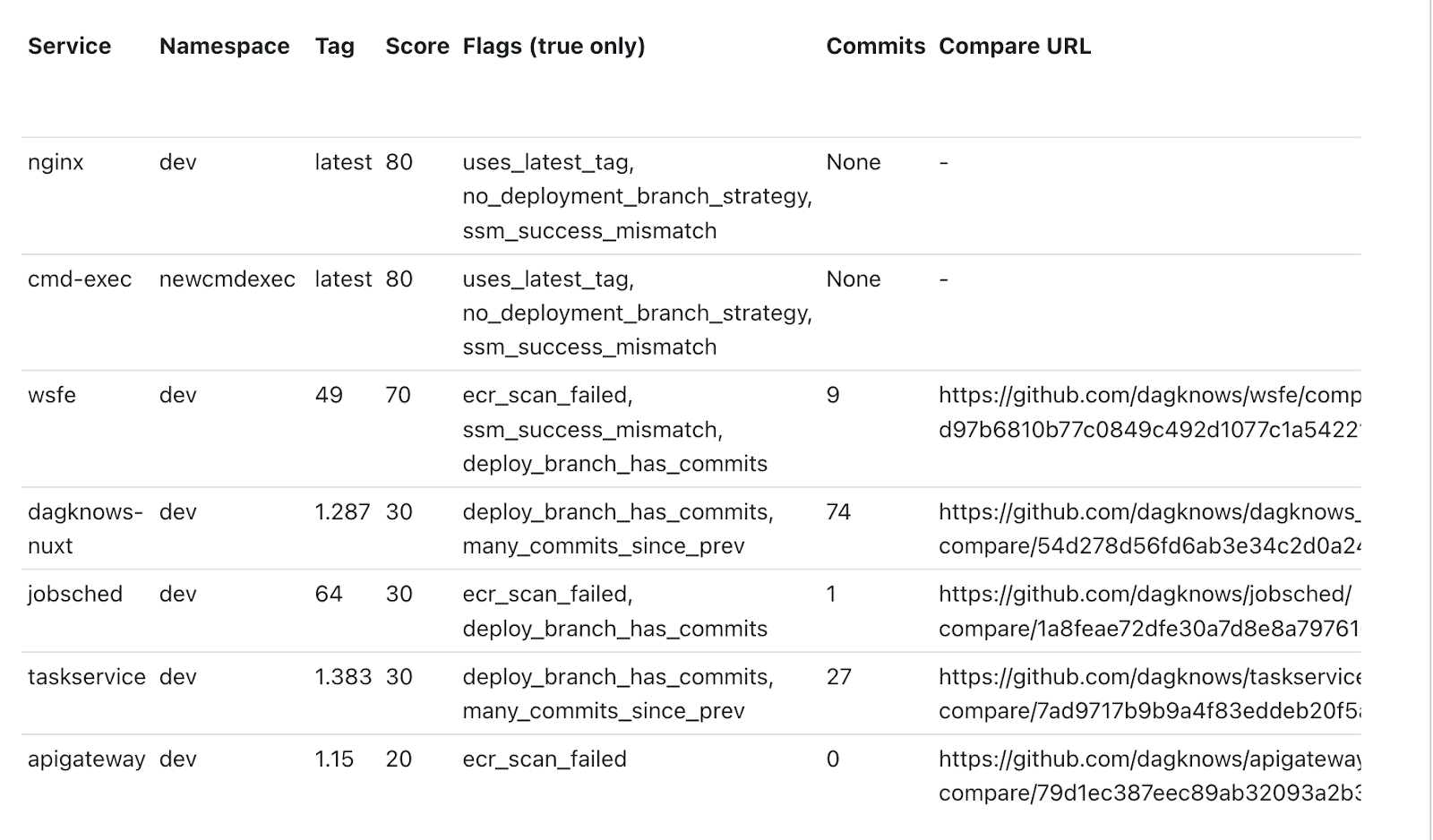
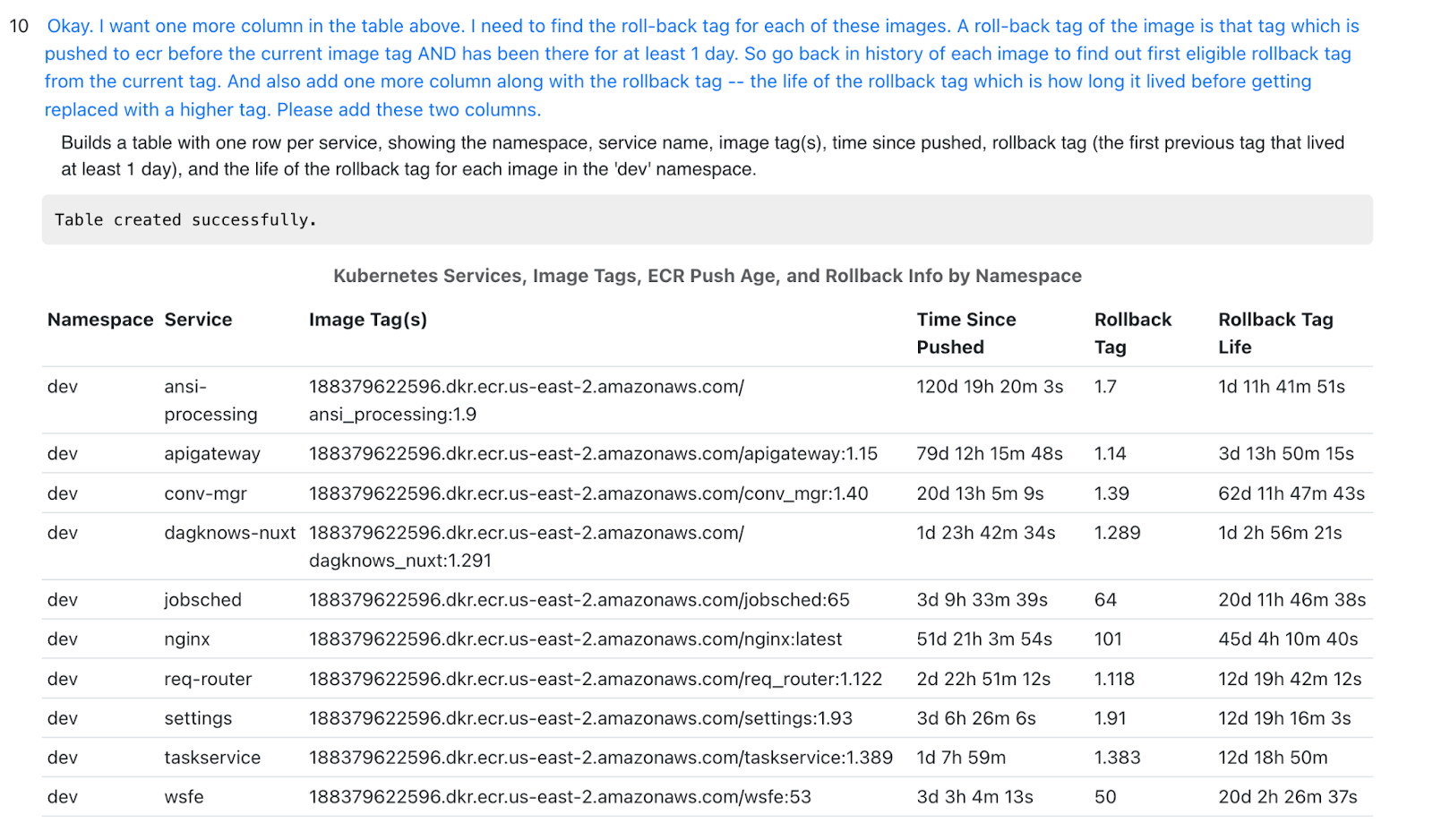
In minutes, you have a custom rollback dashboard tailored to your environment. And you can keep refining it—adding new columns, adjusting thresholds, or swapping out data sources.

This is deliberately boring. In incident response, boring is good.
The next time you face a 2 a.m. incident, you don’t want to be guessing. You want evidence, a safe default rollback version, and a boring click.
We’ve made this part of our process at DagKnows, but the approach is generic enough for any SaaS SRE team. Start small, build your dashboard, and let AI do the tedious correlation.
And then—go do something fun. Because boring SREs are the best SREs.